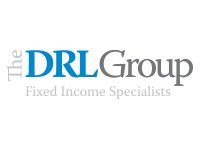
Municipal bond buyers are finding more ways to sleep well at night. In the first half of 2025, a growing share of new issues came to market with a belt-and-suspenders appeal – solid credit quality paired with insurance, offering investors both strong fundamentals and an extra layer of protection.
The numbers tell a compelling story. During those six months, the amount of municipal debt backed by insurance climbed by 12.4% compared to the same period last year. Together, the two leading bond insurers, Assured Guaranty and Build America Mutual, guaranteed $22.1 billion in issuance, up from $19.4 billion in early 2024, according to The Bond Buyer. The total was spread across 873 deals, an increase from 770 in the same period last year, a sign that more issuers are opting for insurance.
The insured share of total municipal issuance reached about 7.9% from January through June of this year, consistent with the 7% to 8% range seen since 2021. While that might seem modest, it represents billions of dollars in additional security for bondholders navigating an increasingly complex market landscape.
Market Leadership and Growing Confidence
Assured Guaranty emerged as the dominant player, insuring 64% of the insured par amount sold in the first half of 2025. During that time, it insured $14.1 billion in par value of new municipal issues, 30% more than in the same period last year, and the highest first-half total the company has reported in more than a decade.
The momentum accelerated in the second quarter alone, when Assured insured $9.5 billion across 252 deals – a 32% year-over-year increase in volume and a 41% jump in deal count. These figures suggest that both large and small issuers are increasingly viewing insurance as a worthwhile investment.
Perhaps most telling is what happened with high-quality bonds. Assured said it insured 54 already high-grade, AA-rated issues totaling $3.3 billion in the second quarter. Over the first half of 2025, it wrote more than 100 policies covering about $5 billion of such high-quality debt. This trend underscores that even well-rated bonds are benefiting from the added security of insurance, suggesting that market participants see value beyond just credit enhancement.
Build America Mutual, commanding about 36% market share, insured approximately $8.0 billion across 400 deals. Of those, 27% were AA-rated, indicating a similar pattern of strong credits seeking additional protection.
A Win-Win Scenario
The rise in insured issuance creates benefits that ripple through the entire municipal bond ecosystem. For investors, insured municipal bonds offer a pathway to access lower-rated, though still investment-grade, issuers while benefiting from the insurer’s typically AA or higher rating. That upgrade can make certain bonds appealing to a broader investor base and often results in better pricing and improved liquidity.
“More insured bond volumes overall suggest better financial metrics for the companies themselves, plus improved liquidity for insured paper,” noted Matt Fabian of Municipal Market Analytics, according to The Bond Buyer. This observation captures the self-reinforcing nature of the trend – as insurers write more business, their own financial strength improves, which in turn makes their guarantees more valuable.
The timing couldn’t be better for investors seeking stability. Amid soaring issuance and waves of reinvestment dollars, municipal bond investors are encountering an environment that increasingly rewards those with sharp insight, timely information, and a clear view of where value is emerging. Second-quarter trading volumes hit a record high, and mutual fund inflows remain strong. Quality bonds are being snapped up quickly, making it essential for investors to stay engaged and attuned to shifts in demand and value across the yield curve.
Broader Market Support
Confidence in the broader market remains solid, bolstered by recent developments at the federal level. This week, S&P reaffirmed the United States’ AA+ credit rating, citing increased tariff revenue as a key offset to the fiscal impact of recent tax cuts and spending measures.
“Amid the rise in effective tariff rates, we expect meaningful tariff revenue to generally offset weaker fiscal outcomes that might otherwise be associated with the recent fiscal legislation, which contains both cuts and increases in tax and spending,” S&P noted in its report. The rating agency added that “meaningful tariff revenue has the potential to offset the deficit-raising aspects of the recent budget legislation.”
This reaffirmation helps support the municipal market backdrop, particularly for investors focused on underlying credit fundamentals and longer-term income stability. Federal credit strength bolsters confidence in state and local obligations, creating a more favorable environment for municipal issuers and their bondholders.
Supply Meets Steady Demand
The insurance trend is playing out against a backdrop of robust issuance. Total municipal bond issuance has already reached $366 billion in 2025 and is on pace to hit $575 billion to $600 billion by year-end, according to The Bond Buyer. Despite this hefty supply, most of it is being met with steady demand, thanks in part to an estimated $55 billion in August reinvestment cash from maturing bonds and interest payments.
Individual investors continue to play a significant role in driving this demand. A recent week saw nearly 375,000 municipal bond trades, many in lot sizes that indicate individuals are actively and steadily adding to their portfolios. This retail participation provides a stable foundation for the market, as individual investors typically buy and hold rather than trade frequently.
The combination of increased insurance coverage, strong underlying credit quality, and robust demand suggests that the municipal bond market is evolving in ways that benefit all participants. For issuers, insurance can lower borrowing costs and broaden investor appeal. For investors, it provides additional security and better liquidity. And for insurers, the growing volumes strengthen their business models and market position.
As the market continues to mature and adapt to changing conditions, the trend toward greater insurance penetration appears likely to persist, offering municipal bond investors yet another tool for building diversified, income-generating portfolios with an enhanced margin of safety.






